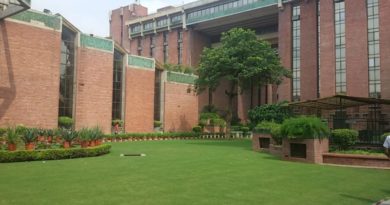CoA | RESPONSIBILITIES
The Council of Architecture (CoA), an autonomous Statutory Body, has been constituted by the Government of India to enforce the Architect’s Act 1972, enacted by the Parliament of India. The CoA regulates the Architectural Profession, handles the registration of Architects and regulates Architectural Education throughout India besides maintaining the Register of Architects. The Council meets at least once in every six months in regard to the transaction of business.

Here is a very brief summary of the main Responsibilities of the Council Of Architecture under the following headings:
Who is the Registrar of the Council of Architecture in India?
What are the responsibilities of the Council of Architecture in India?
WHO IS THE REGISTRAR OF THE COUNCIL OF ARCHITECTURE IN INDIA?
WHAT ARE THE RESPONSIBILITIES OF THE COUNCIL OF ARCHITECTURE IN INDIA?
The Council prepares and maintains a Register of Architects in India.- Anybody who possesses the requisite qualification after having undergone education in accordance with the CoA, Minimum Standards of Architectural Education Regulations, 1983, and who is desirous of carrying on the profession of ‘Architect’ must have himself registered with the CoA. The registration entitles a person to use the title and style of Architect and to practice the profession of Architecture. If any person falsely claims to be registered or misuses title and style of architect, such acts tantamount to committing of a criminal offence, which is punishable under section 36 or 37 (2) of the Architects Act, 1972.

The CoA prescribes the minimum standards of architectural education – required for granting recognized qualifications by colleges or institutions in India. The standards of architectural education in India are governed by Council of Architecture (Minimum Standards of Architectural Education) Regulations, 1983, which prescribes the eligibility for admission, course duration, standards of staff & accommodation, course content, examination etc. The Council has the power to require from time to time, information on the courses of study and examinations conducted by the recognized architectural colleges and institutions and oversees that the standards are maintained periodically, by way of conducting inspections through Committees of Experts.
The CoA recommends recognition of architectural institutions in India – The Council appoints inspectors to inspect any Institution where Architectural Education is imparted, for the purpose of recommending to the Central Government recognition of Architectural Qualifications granted by the Institution.
The CoA can also make a representation to the Government to withdraw the recognition granted to a Institution – if it appears to the Council that the courses of study and examination or the staff, equipment, training and other facilities provided do not conform to the standards prescribed by the Council.
The profession of an Architect is governed by the CoA – Architects (Professional Conduct) Regulations, 1989 (as amended in 2003) which deals with professional ethics and etiquette, professional conduct, conditions of engagement and scale of charges, architectural competition guidelines etc. An Architect is required to observe professional conduct as stipulated in the Regulations, and any violation shall constitute Professional Misconduct, which will attract disciplinary action as stipulated under section 30 of the Architects Act, 1972.
The CoA has the power to make regulations – The Council with the approval of the Central Government can make new regulations not inconsistent with the provisions of the Architects Act.
The CoA appoints other officers and employees as it deems necessary to carry out its functions – The Council fixes the pay and allowances of its officers and employees.
The CoA controls and manages a Fund – which consists of the fees received and the money received from the Central Government. All expenses incurred by the Council are paid out from this Fund.
The Council Of Architecture (CoA) in India has stipulated guidelines and regulations regarding an Architect’s profession and education. To know more, go to:
- An Architect’s Educational Qualifications
- An Architect’s Services and Responsibilities
- An Architect’s Charges
- An Architect’s Conduct
- Registration of an Architect with the CoA
- Architectural Competitions
If you found this post useful, I would really love it if you pin it or share it. All it takes is a simple click on the “pin it” “like,” “share,” “tweet,” or Google+ buttons below the post.
Related Posts:





Local authorities grant surveyor’s licence to draftsman on the basis of experience is this legal?
Please enlighten on following issues:
1. Who can take action against a person Falsely Claiming to be an Architect & Practising. Because due to this public at large is duped.
2. What are the Documents required to lodge a complaint to the Council Of Architecture against such ‘Pseudo Architects’.
Dear Mr Makarand,
WHO CAN COMPLAIN ABOUT A ‘PSEUDO ARCHITECT’?
I am very glad you brought up a very pertinent point about ‘pseudo Architects’. They can be found in every city, town in India because not many insist on confirming whether they are real or not. The easiest way to find out is to ask the ’so-called-architect’ for the Council of Architecture (CoA) Registration Number, before you entrust him/her for your project. In case he/she hesitates, you can verify with the Council if the said ‘Architect’ is registered or not. One can contact the Council here: http://www.coa.gov.in/
Admin
Anybody who confirms that a person pretending to be an “Architect” is not registered with the Council of Architecture, can lodge a police complaint against the ‘pseudo Architect’ and complain to the Council as well.